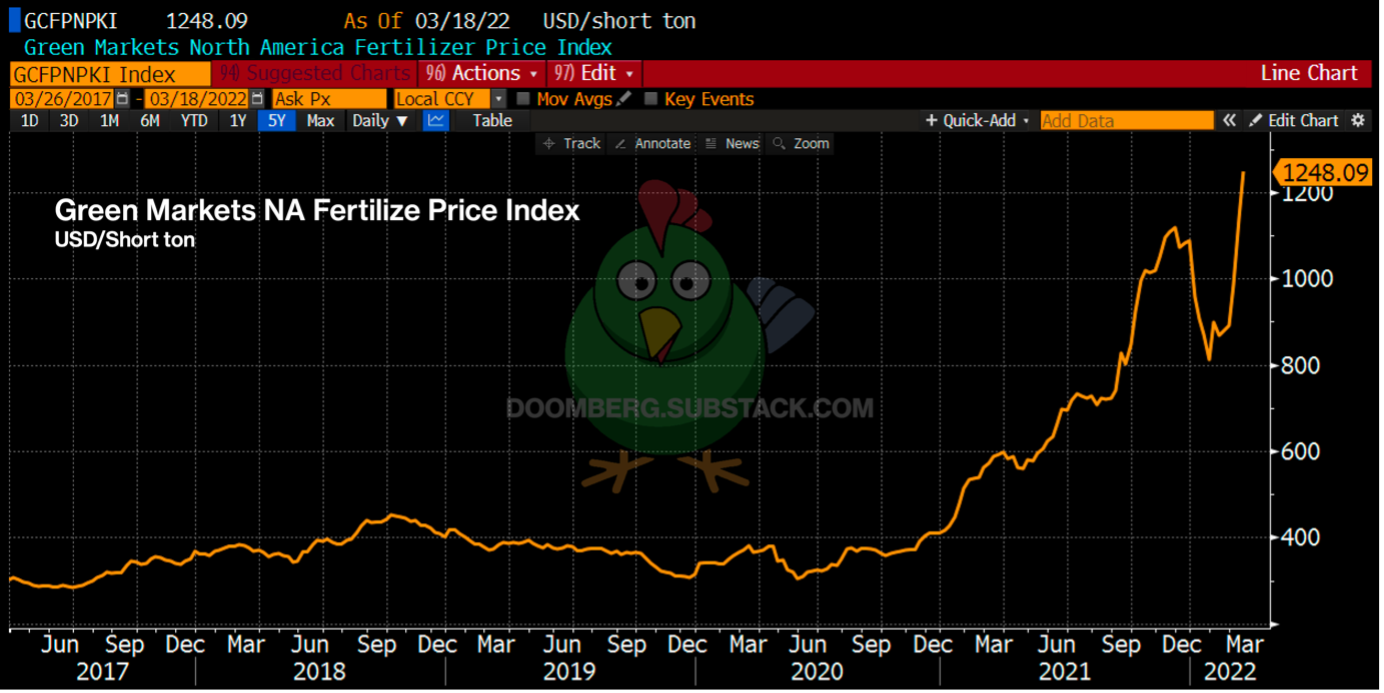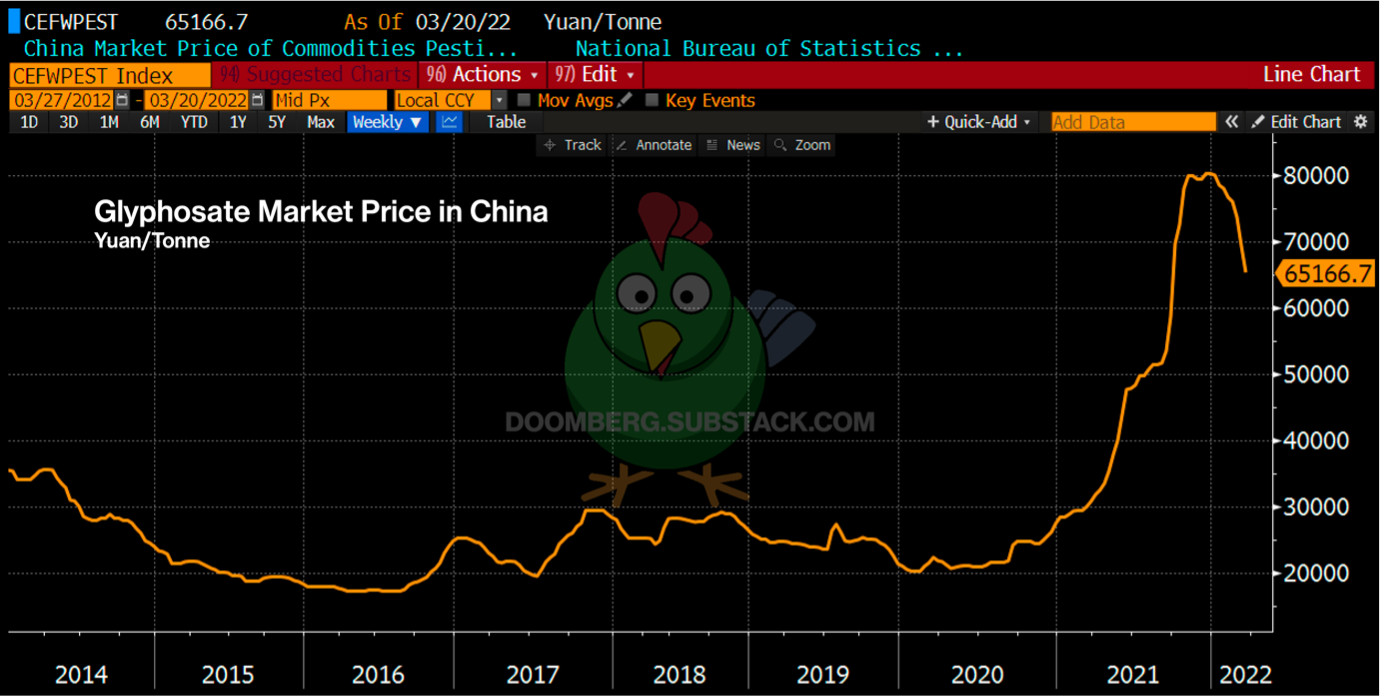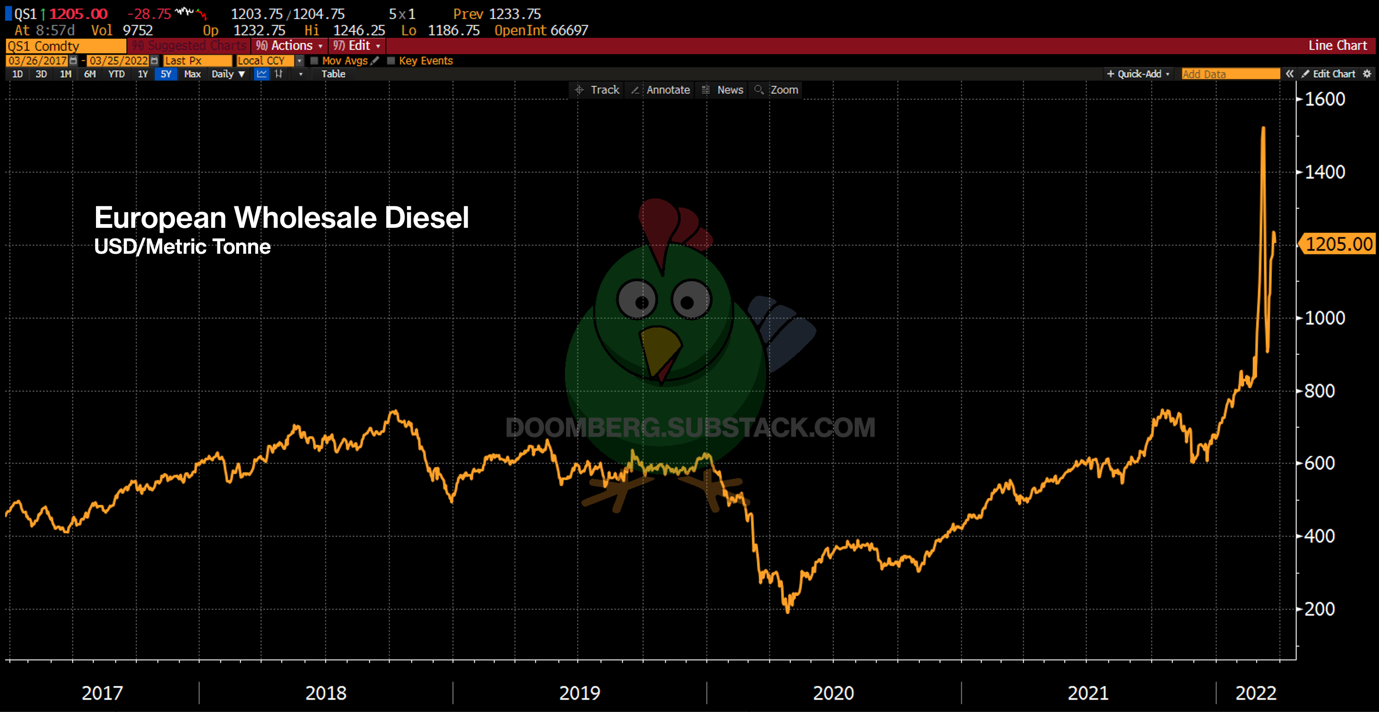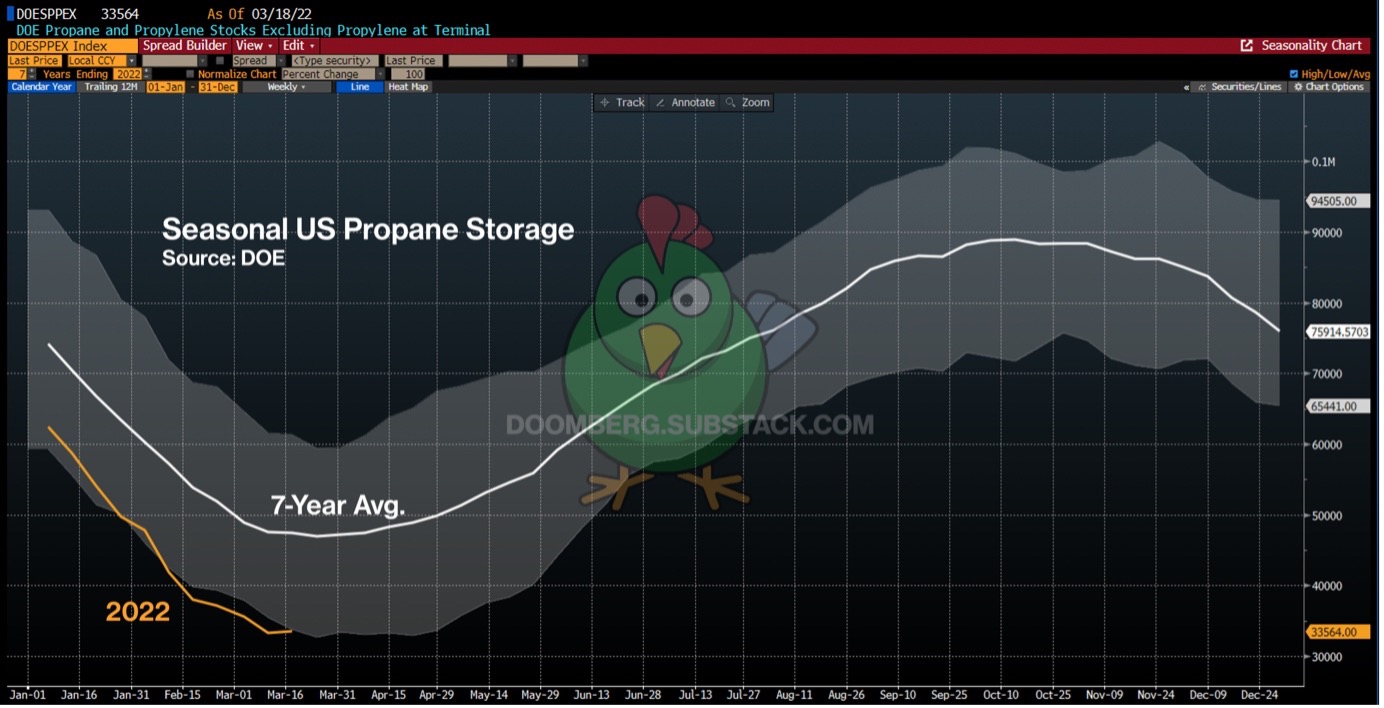Viele Faktoren befeuern Hungerkrise
- „While the concept of a perfect storm is often too casually assigned in popular culture, it is difficult to find a more apt description of what has been unfolding in the global agriculture markets over these past several months. The tempest caused by the European energy disaster has merged with the hurricane of consequences flowing from Russia’s invasion of Ukraine, forming the genesis of a generational crisis in food that will leave few unaffected.“ – bto: Verglichen mit dieser Beschreibung sind meine Warnungen nun wirklich harmlos.
- „In a financial crash, the correlation between all asset classes converges to one. The coming crash in global food supply will be driven by a similar phenomenon across virtually every input into farming – they are all spiking to historic highs simultaneously, supply availability is diminishing across the spectrum, and the time to reverse the worst of the upcoming consequences is rapidly running short.“ – bto: Es kommen nämlich alle Faktoren zusammen.
- „We begin with the price of fertilizer, which has been soaring to record highs across the globe. Key sources of nitrogen, potassium, and phosphorous – important inputs into soil fertility, crop yield, and plant maintenance – have all gone vertical. Ammonia is derived directly from natural gas, and the price of natural gas outside of the US has gone vertical.“ – bto: Das – die Preisentwicklung bei Erdgas und seine Folgen – fasst das Problem gut zusammen: Es wird sehr teuer und deshalb werden die Bauern weniger düngen und weniger erwirtschaften.
- „Belarus is the third-largest supplier of potash in the world and its state-owned miner, Belaruskali, declared force majeure after sanctions were imposed by the US and Europe. The number two supplier of potash globally? Russia. Perhaps front-running the Russian move on Ukraine, China halted phosphate exports last fall in an effort to ensure adequate domestic supply. The combined impact of these events can be seen in the Green Markets North American Fertilize Index, which tracks a blend of fertilizer prices globally.” – bto: Aber was interessiert das die Politik. Hierzulande wird ohnehin gerne festgestellt, dass zu viel gedüngt wird.

Quelle: Doomberg
- „Weed control is an important element of farming, and herbicides are an irreplaceable tool in the farmer’s repertoire. The most heavily used herbicide in the world is the controversial molecule glyphosate, known widely by its retail brand name Roundup. (…) Glyphosate is effectively little more than an elegantly modified fertilizer, containing both phosphorous and nitrogen. It is derived from similar starting materials – including ammonia – and, as such, its price has soared amid chronic supply shortages. This has caused the price of other herbicides to rise as farmers desperately seek substitutes (…).” – bto: Also werden auch die Pflanzenschutzmittel teurer.

Quelle: Doomberg
- „Diesel is another significant input into farming, and it too is facing a global supply crunch. (…) The dire diesel supply situation predates the Russian invasion of Ukraine. While global oil demand hasn’t yet reached its pre-pandemic level, global diesel consumption surged to a fresh all-time high in the fourth quarter of 2021. The boom reflects the lopsided Covid economic recovery, with transportation demand spiking to ease supply-chain messes.“ – bto: Die Versorgung mit Diesel ist ein bedeutender Aspekt, den ich nicht auf dem Radar hatte.
- „European refineries have struggled to match this revival in demand. One key reason is pricey natural gas. Refineries use gas to produce hydrogen, which they then use to remove sulphur from diesel. The spike in gas prices in late 2021 made that process prohibitively expensive, cutting diesel output.” – bto: Das ist interessant. Sollte man irgendwie berücksichtigen, wenn es um die Wirkung von Lieferstopps geht.

Quelle: Doomberg
- „As expensive as it is to fuel the field equipment needed to farm, keeping them operational at all is becoming an ever-growing challenge. The same chip shortage constraining automobile production has struck the farming equipment industry, making new equipment and spare parts harder to come by.“ – bto: Hier denke ich, dass es meist nicht auf ein Jahr ankommt.
- „Compounding these challenges with machinery is a burgeoning labor shortage that is rapidly adding pressure to this brewing catastrophe.“ – bto: Es gab früher viele Saisonkräfte. Ob die angesichts Corona und Krieg entsprechend wiederkommen, ist offen.
- „Even generously assuming farmers can cobble together enough fertilizer, herbicide, machinery, and labor to produce a good harvest this fall, they may be left to deal with yet another crisis of supply that few off the field have on their radar: propane. (…) Here is the supply situation in chart form, with the shaded region signifying the high- and low-inventory levels over the past seven years.” – bto: Es klingt einfach alles nach einem massiven Angebotsschock.

Quelle: Doomberg
- „What does propane supply have to do with farming? Grain drying. (…) Many farms are located in rural areas without ready access to natural gas, and thus some 80% of grain dryers in the US, for example, rely on propane as a fuel.“ – bto: wieder was gelernt. Allerdings macht dies Dinge nur teurer? Oder trägt es auch dazu bei, dass es weniger Produktion gibt?
- „We believe we are at the onset of a global famine of historic proportions (…) One wonders how many people will starve before our politicians get serious.“ – bto: Ganz meine Meinung, wie ich ja bereits auf bto schrieb.







